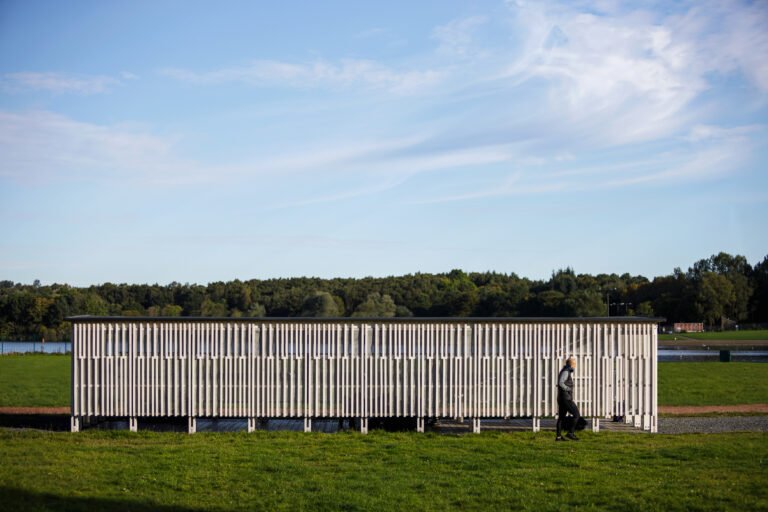These four exhibitions envision a cleaner, greener, and more equitable future
In the June issue of The Architect’s Newspaper, AN’s editors spotlighted four currently on-view exhibitions offering hopeful and particularly salient food for thought for summertime museum- and gallery-goers. One, a traveling exhibition on its final stop, examines the historic role of political and social activism within the design community while pondering the challenging road ahead; another showcases the singular ingenuity (and urgency) of regenerative design; the third assesses the carbon-intensive burden of the built environment while offering smart solutions as to how cities can bid adieu to fossil fuels; and the last explores how California is leading the charge in extracting energy from the Earth with minimal environment degradation.
Read more about each exhibition below, and check out even more AN-approved exhibitions now on view from coast to coast here.
Now What?! Advocacy, Activism & Alliances in American Architecture Since 1968

Boston Society For Architecture
290 Congress St., Ste. 200, Boston, MA 02210
Open through September 30
Ninety sixty-eight was a pivotal year for America, but at the AIA convention that June, civil rights leader Whitney Young Jr. accused architects of a “thunderous silence” when faced with the deep turmoil of that era. In the 54 years since, the criticism has been repeated at regular intervals. Now What?! challenges this narrative with drastic results as it powerfully showcases how architects have supported the advance of civil rights, feminist, and LGBTQ+ causes. Curated by Lori A. Brown, Andrea J. Merrett, Sarah Rafson, and Roberta Washington and realized in partnership with ArchiteXX, a nonprofit organization promoting gender equity in architecture, this installation in Boston—the show’s 12th so far—includes a section featuring local changemakers like Gregory Minott, cofounder and managing principal at DREAM Collaborative. Colorful supergraphics and interactive features invite visitors to join in the ongoing work of constructing an inclusive profession. Jack Murphy
Full Circle: Design without End

1315 Peachtree St. NE, Atlanta, GA 30309
Open through September 25
That a building is a static, dumb object is only superficially true. The steel and glass of a curtain wall cannot willfully disaggregate from one another, nor enact revenge on the architect who facilitated their union. But seen another way, these material assemblies are temporary amalgams in a long energetic chain of alternating composition and decomposition. In recent years, designers working in an ecological vein have fashioned concepts that help to better grasp the impact their creations have on their surroundings and farther afield. Curated by Laura Flusche and Veronica Klucik, Full Circle showcases systems (e.g., Cradle2Cradle, Living Building) that integrate a “regenerative” approach to design. The argument is substantiated by case studies, including a BIG-designed waste-to-energy power plant in Copenhagen and, closer to home, the Kendeda Building for Innovative Sustainable Design at Georgia Tech by Lord Aeck Sargent. Samuel Medina
Energy Revolution

111 East Wacker Dr., Chicago, IL 60601
Open through October 17
Compared with Full Circle in Atlanta, Energy Revolution, the largest exhibition in the CAC’s history, is heavy on exposition; the exhibition design, by Farr Associates, is characterized by towering walls of texts (in English and Spanish) and infographics foretelling the bleak world ahead should the building industry fail to course-correct in time. But where the arc threatens to become overly didactic, full-size building mock-ups and other attractions offer tangible moments of experience. In an inspired move, the show, staged within the CAC’s permanent Building Tall display, makes partial use of the scaled-down skyscrapers that dot the gallery floor: Infrared analysis, projected onto a model of 875 North Michigan Avenue (a.k.a. the John Hancock Center), reveals the extent to which modernist office slabs—so emblematic of Chicagoan modernity—are energy guzzlers. But lest it leave visitors on a despairing note, the show offers numerous ways to retrofit the problem away. SM
Venting the Earth: Looking at Geothermal Energy

The Center for Land Use Interpretation
9331 Venice Blvd., Culver City, CA 90232
Open through August
Geothermal energy accounts for less than 0.5 percent of national energy production, but 70 percent of this activity takes place in California. (Next up is Nevada, which accounts for 25 percent.) Venting the Earth explores a handful of Californian sites to stage a portrait of the structures and infrastructures of the geothermal industry. At the Geysers Geothermal Field in the northern part of the state, a decline in output necessitated that two pipelines, which snake across the hilly landscape, replenish groundwater in order for it to be heated with wastewater from nearby communities. Around the Salton Sea, thought to be the largest domestic source of lithium, companies are exploring ways to extract it from the groundwater used in geothermal production. The installation continues the CLUI’s mission, pursued since 1994, of disseminating knowledge about American lands. It operates under the belief that the “manmade landscape is a cultural inscription that can be read to better understand who we are, and what we are doing.” JM


